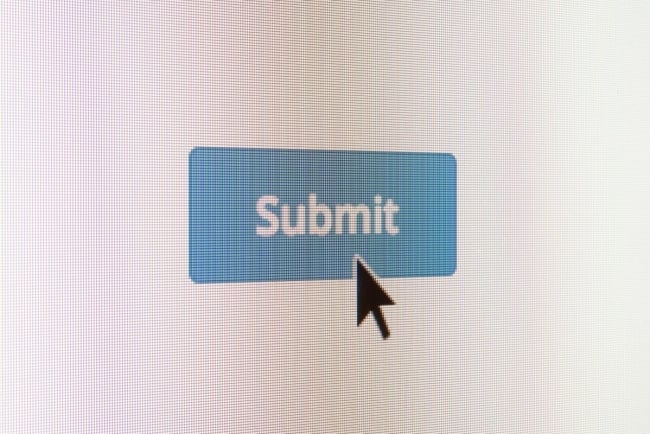You have /5 articles left.
Sign up for a free account or log in.

stockcam/istock/getty images plus
When you apply for a job, it can feel like you’ve taken the application materials you’ve spent hours on and just tossed them into a black hole. You can’t see what happens after you submit, and you so often never hear anything back. And that can make clicking Submit feel like the end of the story.
But really, it’s just the beginning. There’s a whole world beyond the submit button, populated by real people (and not-people -- more on them later) who evaluate your application. You may not see it happening, but it’s happening.
Understanding and internalizing that fact can help you write more effective application materials that account for your audience and their perspectives. It can also make you more informed about the job search process, allowing you to navigate it with more clarity and confidence.
Doing that effectively, however, requires a bit of a mind-set shift, as well as some research and reflection. Below, I offer some questions and answers to help you begin. They aren’t questions you can answer definitively, but thinking about them will get you started on the path to understanding the world beyond Submit.
Who will read your materials? If your application doesn’t actually disappear when you click Submit, what happens? If your application materials are part of a conversation, who’s on the other end?
The most important thing to keep in mind is that there isn’t just one audience for your application. Over the course of the hiring process, a wide range of people -- human resource professionals, members of search committees, hiring managers, interviewers, executives and administrators, and more -- could read it. Each person will approach your application with their own set of curiosities and priorities.
A recruiter in HR will probably be concerned about whether you meet the basic qualifications and seem interested in the job. A hiring manager will be thinking about how you might contribute to their team as you grow in and beyond the position. Future colleagues, on a search committee or before an interview, will wonder what it would be like to work with you and whether you’ll pull your weight. Ultimately, your application materials have to do the hard work of anticipating and then speaking to all of those audiences and their questions at the same time.
Crucially, before it gets to any of those people, your résumé is likely to be read by something that isn’t a person at all. Many organizations use a kind of software called an applicant tracking system (ATS) to manage their hiring processes. Among other things, such a system analyzes incoming résumés and determines whether they warrant further review. Obsessed with keywords and stymied by fancy formatting choices, it’s also just not very smart. With that in mind, it’s worth considering what your résumé looks like to a kind of dimwitted machine.
What expectations and assumptions do they bring to your application? Now that you’ve thought about who will read your materials, consider the frameworks and mind-sets that will influence how they read them.
What assumptions do people tend to make about Ph.D.s? One I hear a lot is the idea that Ph.D.s are too independent for their own good. Knowing that, it may be in your interest to subtly undermine that supposition by highlighting collaboration in your past experience and choosing references who can speak to your ability to take feedback. Another assumption is that Ph.D.s only apply for nonfaculty jobs as a backup and will take any opportunity to return to academe. That usually isn’t true, but if you submit a résumé that reproduces the values of academe (e.g., putting publications first and underselling hands-on experience), you risk reinforcing the idea that you’re stuck in Ph.D.-land and lack commitment about your new path.
What assumptions do people tend make about your field? Whether they have firsthand experience in your discipline or not, readers will bring with them ideas about what it is all about. Those might be positive or negative -- or both at the same time. An English graduate student I worked with, for example, kept going into interviews where people expected her to be a stickler for grammar because of her discipline. The jobs she was applying for required close attention to detail, though, so she figured she might be able to leverage their assumptions while also conveying openness and friendliness to short-circuit any defensiveness on their part. Basically, once she anticipated those assumptions, she could turn them to her advantage.
How will norms in their field influence how they interpret you? Consider how people typically enter the employment sphere in which you’re are applying, what experiences they usually have and how those paths and experiences align with your own. If you find significant divergence, explore ways of telling your story differently to resonate with what your reader expects.
When it comes to something like project management skills, for example, people who don’t have firsthand experience in graduate school may not automatically understand how much you’ve had to balance competing deadlines or see long-term projects to completion. So it’s up to you to connect the dots and build a coherent profile. Figuring out these kinds of career path expectations can be a little tricky, but they’re great topics for discussion during informational interviews and other networking interactions.
Then there’s the issue of implicit and explicit bias. Research in psychology and organizational behavior regularly indicates that racism and sexism influence how people and organizations review applications. (Perhaps unsurprisingly, this is an issue for algorithms used in hiring, as well.) You can’t really do much about such biases -- it’s a problem that employers need to actively address themselves -- but understanding how they function in hiring can give you some tools to understand what’s happening and claim some agency in the process.
How will they read it? Once you have an idea of who’s going to read your application and the mind-sets they bring with them, it’s worth considering the actual conditions of the reading itself. When do they read applications, and how long do they spend?
Whether the old statistic about recruiters spending seven seconds on a résumé is true or not, the first people to read your application -- be they HR staff or search committee members -- will likely be doing so very quickly. In your own reading for research, you’ve probably found that sometimes skimming an article or gutting a book is the only way to get through. That’s the case in many hiring processes, as well; people simply don’t have the time at the start to read everything carefully. I was once on a search committee that had to read over 70 applications in less than a day. It wasn’t fun and required all the skimming powers I developed in grad school.
So what does that mean for how you design your application materials, especially your résumé? Eye-tracking studies of what happens when recruiters actually look at résumés demonstrate the importance of clear formatting and concise descriptions. Those studies, and the fact that most people read résumés on computer screens these days, also mean that the first half of the first page is absolutely crucial.
At the same time, while your application needs to reward a quick skim, it can’t only reward a quick skim. Later in a hiring process, as they prep to interview you or weigh whether to extend an offer, hiring managers and others will spend much longer with your application. If it’s all keywords and no story, they won’t find the depth and richness they need to get excited about what you can offer. The most effective application materials account for both styles of reading, which is a skill that takes practice and feedback.
As you can see, a lot of different people and processes are in play behind the scenes in your job search. So next time you get ready to hit Submit, consider the world beyond the button.




